-
Recent Posts
- Trump’s “Big Beautiful Bill” Is a Grotesque Giveaway to Fossil Fuel Billionaires While Adding $3.3 Trillion to Nation’s Debt
- Senator Chris Murphy Charges that Trump “Has Opened a Channel for Bribery”
- Congressman Casten: Trump’s Assault on the Rule of Law Is Causing Capital Flight Out of U.S. by Foreign Investors
- Trump’s Approval Rating Drops to 80-Year Low; IMF Says U.S. Tariffs Now Exceed the Highs During the Great Depression
- Nasdaq Has Lost More than 3,000 Points Since Trump’s First Full Day in Office in 2025; the Pain Has Barely Begun
- The Bond Crisis Last Week Was a Global No-Confidence Vote in U. S. President Donald Trump
- Trump’s Tariff Plan Guts $5 Trillion in Stock Value in Two Days; Senator Warren Calls for Emergency Action Before Markets Open on Monday
- Trump’s Attacks on Big Law, Universities, and the Media Have a Common Goal: Silence Dissent Against Authoritarian Rule
- Trump Administration Gives All Clear to Laundering Money through Shell Companies and Bribing Foreign Officials
- Four Megabanks on Wall Street Hold $3.2 Trillion in Uninsured Deposits – Which May Explain Senator Schumer’s Pivot to the GOP to Stop a Government Shutdown
- Here’s What Came Crashing Down Yesterday for Trump’s “Genius” Guy, Elon Musk: Tesla Stock, Access to Twitter (X), His Years of Secret Calls with Putin
- After Banning the Associated Press, Trump Is Now Targeting Specific Journalists That He Wants to See Fired
- Closely Watched Atlanta Fed Model Predicts Negative U.S. Growth in First Quarter
- Trump’s Gangster Diplomacy Makes Front Page Headlines Around the Globe
- Who Benefits Alongside Elon Musk If He Succeeds in Killing the CFPB: the Megabanks on Wall Street that Underwrite His Tesla Stock Offerings
- In Trump 1.0, the State Department Used Taxpayer Money to Publish a Book Elevating Elon Musk to a Superhero; It Was Funded by USAID, the Agency Musk Wants to Quickly Shut Down
- News Host Joy Reid Raises Threat of Trump Selling U.S. to Putin; Ten Days Later Her Show Is Cancelled
- Elon Musk’s DOGE Appears to Be Violating a Court Order; It Has Taken Down Hundreds of YouTube Videos that Educate Americans on How to Avoid Being Swindled
- Barron’s Releases Audio of Jamie Dimon Cursing Out His Workers at a Town Hall, as Dimon Plans to Dump Another One Million JPM Shares
- There’s One Federal Investigative Agency that Neither Trump nor Elon Musk Can Touch: It Just Opened an Investigation into DOGE
- Elon Musk’s Companies Were Under Investigation by Five Inspectors General When the Trump Administration Fired Them and Made Musk the Investigator
- Donald Trump Gives the Greenlight to Goldman Sachs and JPMorgan Chase to Return to Bribing Foreign Officials
- After Tech Geeks Built a Back Door to Loot Billions from FTX, Republicans Refuse to Investigate What Elon Musk’s Tech-Squad Did Inside the U.S. Treasury’s Payment System
- Former Prosecutor, Now U.S. Senator, Informs Tesla That CEO Musk May Be Violating Federal Law and to “Preserve All Records”
- Trump’s Hedge Fund Guy Is Now Overseeing the U.S. Treasury, IRS, OCC, U.S. Mint, FinCEN, F-SOC, and the Consumer Financial Protection Bureau
- As Elon Musk Begins Shutting Down Payments to Federal Contractors, a Strange Money Trail Emerges to His Operatives Inside the U.S. Treasury’s Payment System
- JPMorgan Chase Charged by Yet Another Internal Whistleblower with Cooking the Books
- We Asked Google’s AI Search Model, Gemini, Questions About the Fed and Wall Street Megabanks: It Got the Answers Dead Wrong
- With Trump and Melania’s Crypto Coins Likely to Raise Legal Challenges, Why Didn’t Trump Fire the SEC’s Inspector General in His Purge of IGs?
- Fossil Fuel Industry Could End Up Paying Tens of Billions for LA Wildfires and Deceiving the Public on Climate Change for Decades
- It’s Being Called the Biggest Grift by a President in U.S. History: Trump and First Lady Launch their Own Crypto Coins
- Trump Plans to Install a Fracking CEO to Head the Energy Department and Declare a National Emergency on Energy to Gain Vast Powers
- Fossil Fuel Money Played a Role in the Los Angeles Fires and the Push to Install Pete Hegseth as Secretary of Defense
- When It Comes to Wealth Retention in Retirement, Concrete May Be the New Gold
- Wall Street Watchdog Warns “Clock Is Ticking on a Coming Catastrophic Financial Crash”
- Wall Street Is Sending the Same Message to Americans on Fossil Fuel Financing that It Sent on Cigarettes: Drop Dead
- In a Six-Week Span, this Dark Pool with a Curious Past Traded 3.7 Billion Shares
- Wall Street’s Lobby Firm Hired Eugene Scalia of Gibson Dunn to Sue the Fed for Jamie Dimon
- Postmaster General Louis DeJoy Made $561,051 in Compensation in 2024, as Mail Costs Spiked and Delivery Deteriorated
- Fed Chair Jay Powell Sends a Bold Message to Trump and Tanks the Dow by 1123 Points
- The Head of Fixed Income at T. Rowe Price Makes the Scary Case for the 10-Year Treasury to Spike to 6 Percent
- $663 Billion in Cash Assets Have Gone Poof at the Largest U.S. Banks
- Donald Trump to Ring Bell at New York Stock Exchange Today as Hit List Posters Appear in Manhattan Targeting Wall Street CEOs
- Trump Has a Slush Fund to Prop Up the Dollar – Will He Use It to Prop Up Bitcoin Instead?
- A CEO Assassination; a Billionaire Heiress/NYPD Commissioner; a Secret Wall Street Spy Center – Here’s How They’re Connected
- Despite More than 1600 Tech Scientists Signing a Letter Calling Crypto a Sham, Trump Names a Crypto Cheerleader for SEC Chair
- The Fed Rings a Warning Bell: Hedge Funds and Life Insurers Are Reporting Historic Leverage
- Trump’s Nominee for FBI Director, Kash Patel, Has Businesses Financially Intertwined with Trump
- Donald Trump Is at Risk of Getting Named in a Fossil Fuels Conspiracy Lawsuit
- Trump Is Having Difficulty Getting a Lawyer to Accept the Nomination for SEC Chair: Here’s Why
Search Results for: JPMorgan
Dodd-Frank Is 10 Years Old Today and the Fed Is Back to Bailing Out Wall Street
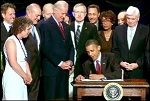
By Pam Martens and Russ Martens: July 21, 2020 ~ Today marks the 10th Anniversary of the enactment of the Dodd-Frank Wall Street Reform and Consumer Protection Act, named after its two sponsors, former Senator Christopher Dodd (D-CT) and former Congressman Barney Frank (D-MA). The massive piece of legislation was signed into law on July 21, 2010 by President Barack Obama at a time when Democrats controlled both houses of Congress – meaning there was no excuse not to put tough Wall Street reform legislation in place. While the progressive wing of the Democrats was demanding the restoration of the Glass-Steagall Act, which would have completely separated the federally-insured, deposit-taking banks from the Wall Street casino (the trading firms known as investment banks and broker-dealers), the Wall Street wing of the Democrats didn’t want to upset their big political campaign donors on Wall Street. The result was that the Wall … Continue reading
The Central Bank of Israel Doesn’t Want You to Know What U.S. Stocks It Owns; Neither Does the SEC

By Pam Martens and Russ Martens: July 16, 2020 ~ It’s no wonder that American citizens are receiving just a tiny snippet of critical news from mainstream media. Federal regulators have set a new low in withholding documents that the public and the media are entitled to under the Freedom of Information Act (FOIA). These censored documents could inform us on what’s really driving policy decisions in Washington. Take our latest FOIA brush with the Securities and Exchange Commission (SEC). Foreign central banks and sovereign wealth funds are required under law to report their publicly-traded U.S. stock positions no later than 45 days after the end of each calendar quarter. This is done on Form 13F, which is filed with the Securities and Exchange Commission, if those stock holdings reach $100 million or more. The central bank of Israel, known simply as the Bank of Israel, has not been doing … Continue reading
House Hearing Today Examines Wall Street’s Brand of Capitalism Versus the Health of the U.S. Economy
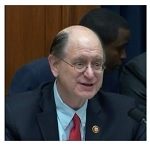
By Pam Martens and Russ Martens: July 14, 2020 ~ The House Financial Services’ Subcommittee on Investor Protection, Entrepreneurship and Capital Markets will convene a hearing at noon today that is titled: “Promoting Economic Recovery: Examining Capital Markets and Worker Protections in the COVID-19 Era.” You can watch the hearing live at this link. One of the topics for the hearing will be corporations buying back their own stock and paying dividends during the pandemic, actions which benefit shareholders rather than the overall economy. The House is considering legislation that would require that until all federal aid under the CARES Act has been repaid by the corporation, it cannot “pay bonuses to executives, may not pay executives in connection with their termination, may not engage in stock buybacks, and may not pay dividends to shareholders.” The Subcommittee has a very sound, and urgent, basis to explore this topic, particularly as … Continue reading
Ghislaine Maxwell, Wall Street’s Secrets and the U.S. Attorney’s Office

By Pam Martens and Russ Martens: July 7, 2020 ~ Outside of the Wall Street executives that did business with child sex trafficker Jeffrey Epstein, his first lieutenant, Ghislaine Maxwell, knows more about his Wall Street secrets than any other living person. Maxwell was arrested and indicted by the U.S. Attorney’s Office for the Southern District of New York (part of the U.S. Justice Department) on July 2, less than two weeks after the head of that office, Geoffrey Berman, was abruptly fired from his job by Attorney General William Barr. Berman’s former Deputy, Audrey Strauss, conducted the press conference regarding the Maxwell arrest. (See video below.) We immediately noticed a peculiarity about the indictment document provided by Strauss. It covered only a brief 4-year period, running from 1994 through 1997. One of the main accusers of Maxwell, Virginia (Roberts) Giuffre, has credibly indicated in previous court filings that Epstein … Continue reading
Citigroup Has Made a Sap of the Fed: It’s Borrowing at 0.35 % from the Fed While Charging Struggling Consumers 27.4 % on Credit Cards

By Pam Martens and Russ Martens: July 2, 2020 ~ The first thing you need to know about Citibank and its parent, Citigroup, is that they have an extensive rap sheet. (See here). The second thing you need to know is that Citigroup is a serial predator that perpetually promises its regulators that it’s going to reform, but never does. The third thing you need to know is that Citigroup has made a sap out of the Federal Reserve – not once, but twice. During the last financial crisis of 2007 to 2010, Citigroup somehow induced the Fed to secretly give it $2.5 trillion cumulatively in below-market rate loans for 2-1/2 years to prop up its sinking carcass. Citi got the cheap loans (often at below one-half of one percent) and then went right on charging its struggling credit card customers high double-digit interest rates. Citi played a major role … Continue reading
10 Key Questions House Reps Should Ask Powell and Mnuchin Tomorrow

By Pam Martens and Russ Martens: June 29, 2020 ~ Tomorrow, June 30, the House Financial Services Committee will hold a hearing beginning at 12:30 p.m. titled “Oversight of the Treasury Department’s and Federal Reserve’s Pandemic Response.” Fed Chair Jerome Powell and Treasury Secretary Steve Mnuchin are scheduled as witnesses. A good number of Democrats on this Committee – such as Maxine Waters (the Chair), Katie Porter, Bill Foster, Brad Sherman, Carolyn Maloney, Madeleine Dean, Sylvia Garcia, and Ayanna Pressley – have no problem fashioning probing questions that benefit the American people’s right to know if government is showing proper stewardship of the people’s money. But Republicans can’t seem to craft a meaningful question, opting instead to simply heap praise on Powell and Mnuchin for the bailout and simultaneous deregulation of Wall Street. Wall Street On Parade is nothing if not charitable. We want to help out the Republicans on … Continue reading
Fed’s Stress Tests Results Based on GDP Decline of 8.5 Percent; Atlanta Fed’s GDPNow Forecast Says GDP Will Decline by 46.6 Percent
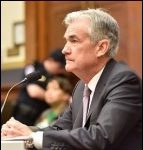
By Pam Martens and Russ Martens: June 26, 2020 ~ Yesterday the Federal Reserve released its highly awaited stress tests on the biggest and most dangerous banks in America. The stress test results fill an 83-page document with dozens of charts showing what would happen to the banks under a hypothetical “severely adverse scenario.” This scenario, unfortunately, was previously prepared and pales in comparison to the actual economic damage rendered by the COVID-19 pandemic. For example, the severely adverse scenario for this year’s stress tests imagined the U.S. unemployment rate climbing to a peak of 10 percent in the third quarter of 2021. The unemployment rate is currently 13.3 percent. But far more frightening, the Fed’s severely adverse scenario for GDP imagined a decline of “8½ percent from its pre-recession peak, reaching a trough in the third quarter of 2021.” As of yesterday, June 25, the Atlanta Fed’s GDPNow estimate … Continue reading
Bloomberg Drops a Bombshell on the Fed’s Big Bank Stress Tests Set for Release Today
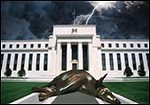
By Pam Martens and Russ Martens: June 25, 2020 ~ The Federal Reserve will release the results of its stress tests on the biggest and most dangerous banks at 4:30 p.m. today. But the potential results of those tests played a negative role in the stock market’s performance yesterday. The Dow’s drop of 710 points yesterday can be ascribed to two things: the alarming news reports that COVID-19 cases are skyrocketing in the second and third most populous states in the U.S. – Texas and Florida; and a bombshell report from Bloomberg News released at 7:00 a.m. yesterday morning. The Bloomberg article, by Lisa Lee and Shahien Nasiripour, cast the Federal Reserve in an unfavorable light over its failure to halt dividend payments at the biggest Wall Street banks, something that European bank regulators have done during the pandemic crisis. Eight of the largest U.S. banks announced in unison on Sunday, … Continue reading
U.S. Attorney Geoffrey Berman’s Ouster: The Untold Story

By Pam Martens and Russ Martens: June 23, 2020 ~ There’s something unsettling about the top law enforcement officer in the United States telling a brazen lie to the American people late on a Friday night when most folks have called it quits for the week on the news. Shortly after 9 p.m. last Friday evening, the U.S. Attorney General, William Barr, released a statement indicating that the top federal prosecutor for the Southern District of New York, Geoffrey Berman, was “stepping down.” In his place, Barr said this: “I am pleased to announce that President Trump intends to nominate Jay Clayton, currently the Chairman of the Securities and Exchange Commission, to serve as the next United States Attorney for the Southern District of New York.” Two hours later, Geoffrey Berman released his own statement indicating that William Barr had just told a brazen lie to the American people. Berman’s statement … Continue reading
If the Fed Is Being Honest that Citigroup is Well Capitalized, Why Did It Need $3 Billion from the Fed’s Paycheck Protection Program?
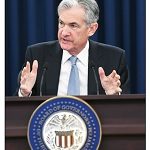
By Pam Martens and Russ Martens: June 18, 2020 ~ There is fresh evidence that Citigroup, the mega Wall Street bank that was insolvent but still illegally propped up by the Fed during the last financial crisis (to the tune of $2.5 trillion cumulatively in secret loans for two and one-half years) is back to drinking at the Fed’s trough. The Fed has set up a program called the Paycheck Protection Program Liquidity Facility (PPPLF). That Fed program is reimbursing small banks for the small business loans that they made under the Paycheck Protection Program which was established by Congress in the CARES Act and being overseen by the Small Business Administration (SBA). According to the Fed, the idea is to reimburse these banks around the country for the PPP loans so that they can make fresh loans to other struggling consumers and businesses. The banks simply post the PPP … Continue reading

